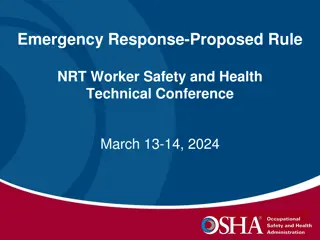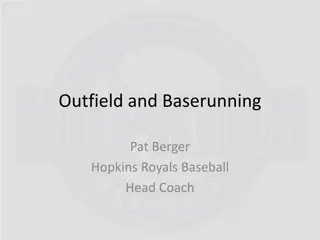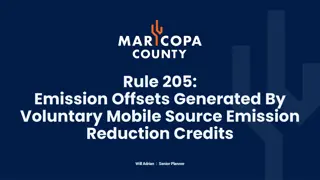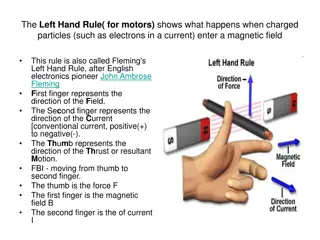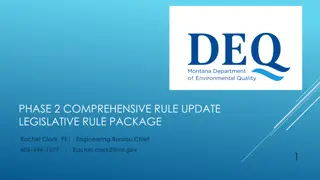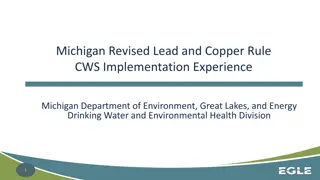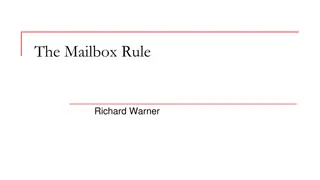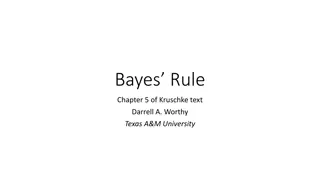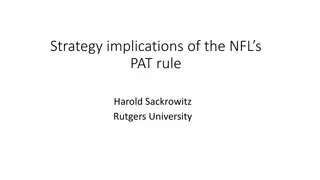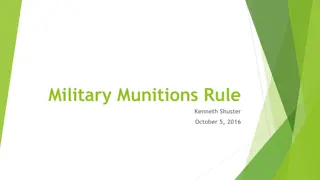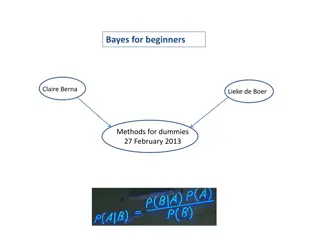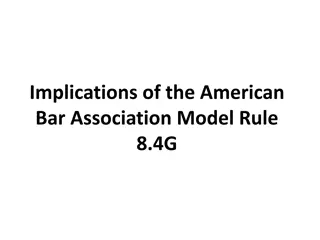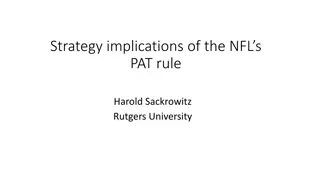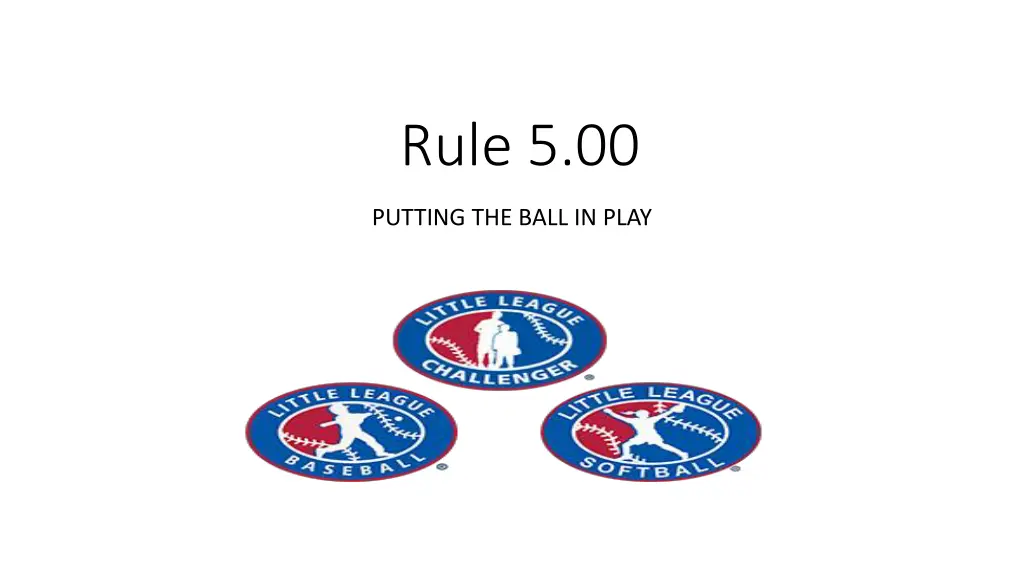
Baseball Rules: Putting the Ball in Play Guide
Discover the essential rules for putting the ball in play in baseball. Learn about starting and suspending the game, pitcher's delivery, offensive and defensive objectives, runner scoring, common dead ball situations, and how play is resumed. Stay informed and enjoy the game with confidence!
Download Presentation

Please find below an Image/Link to download the presentation.
The content on the website is provided AS IS for your information and personal use only. It may not be sold, licensed, or shared on other websites without obtaining consent from the author. If you encounter any issues during the download, it is possible that the publisher has removed the file from their server.
You are allowed to download the files provided on this website for personal or commercial use, subject to the condition that they are used lawfully. All files are the property of their respective owners.
The content on the website is provided AS IS for your information and personal use only. It may not be sold, licensed, or shared on other websites without obtaining consent from the author.
E N D
Presentation Transcript
Rule 5.00 PUTTING THE BALL IN PLAY
Rule 5.00 5.01 To officially start a game, the umpire must call Play. 5.02 To suspend the game, or create a dead ball situation, call Time. 5.03 The pitcher shall deliver a pitch to the batter. 5.04 The offense s objective is to turn batters into runners and advance. 5.05 The defense s objective is to prevent runners and their advancement. 5.06 When a runner touches all bases legally, they score one run. 5.07 When 3 outs are made, switch sides. 5.08 If a base coach intentionally interferes with a thrown ball, the runner is out. Accidental contact with a thrown ball shall not be called interference.
Rule 5.00 5.09 The ball is dead and runners advance one base or return to their base(s) without liability to be put out when: A pitch hits the batter or their clothing in a legal position. (runners advance if forced) Umpire interference of a catcher s act of throwing. (runners return) An illegal pitch/balk. (runners advance) Illegally batted ball, fair or foul. (runners return) An uncaught foul ball. (runners return) A fair ball strikes a fielder*. A fair ball strikes an umpire or runner before it touches an infielder, including the pitcher. (runner that gets hit is out) A pitched ball lodges in the catcher s/umpire s mask or paraphernalia. (runners advance) Jr/Sr baseball Any legal pitch touches a runner trying to score. (runners advance)
Rule 5.00 5.10 The ball is dead when the umpire calls time. The umpire shall call time when: Weather, darkness, similar conditions make further play impossible. SAFETY FIRST Light failure makes it difficult to follow the play. An accident incapacitates a player or umpire. For a homerun or an umpire award, a substitute may complete the play for the incapacitated player. A manager requests time for a substitution or conference. Note: 1 offensive timeout per inning. The umpire wishes to examine the ball or consult with a manager. A fielder, after catching a fly ball, falls into a dead ball area. Note: If the fielder does not fall, do not kill play. Runners may advance at their own risk. The fielder can throw from the dead ball area. When an umpire orders anyone removed from the playing field. Except for light failure or an accident, do not call time during a play in progress.
Light Failure Not the same as darkness.
Rule 5.00 5.11 Play shall be resumed when: The pitcher with possession of the ball takes position on the pitcher s plate. The batter is positioned in the batter s box ready to hit. The catcher is positioned in the catcher s box ready to receive.

